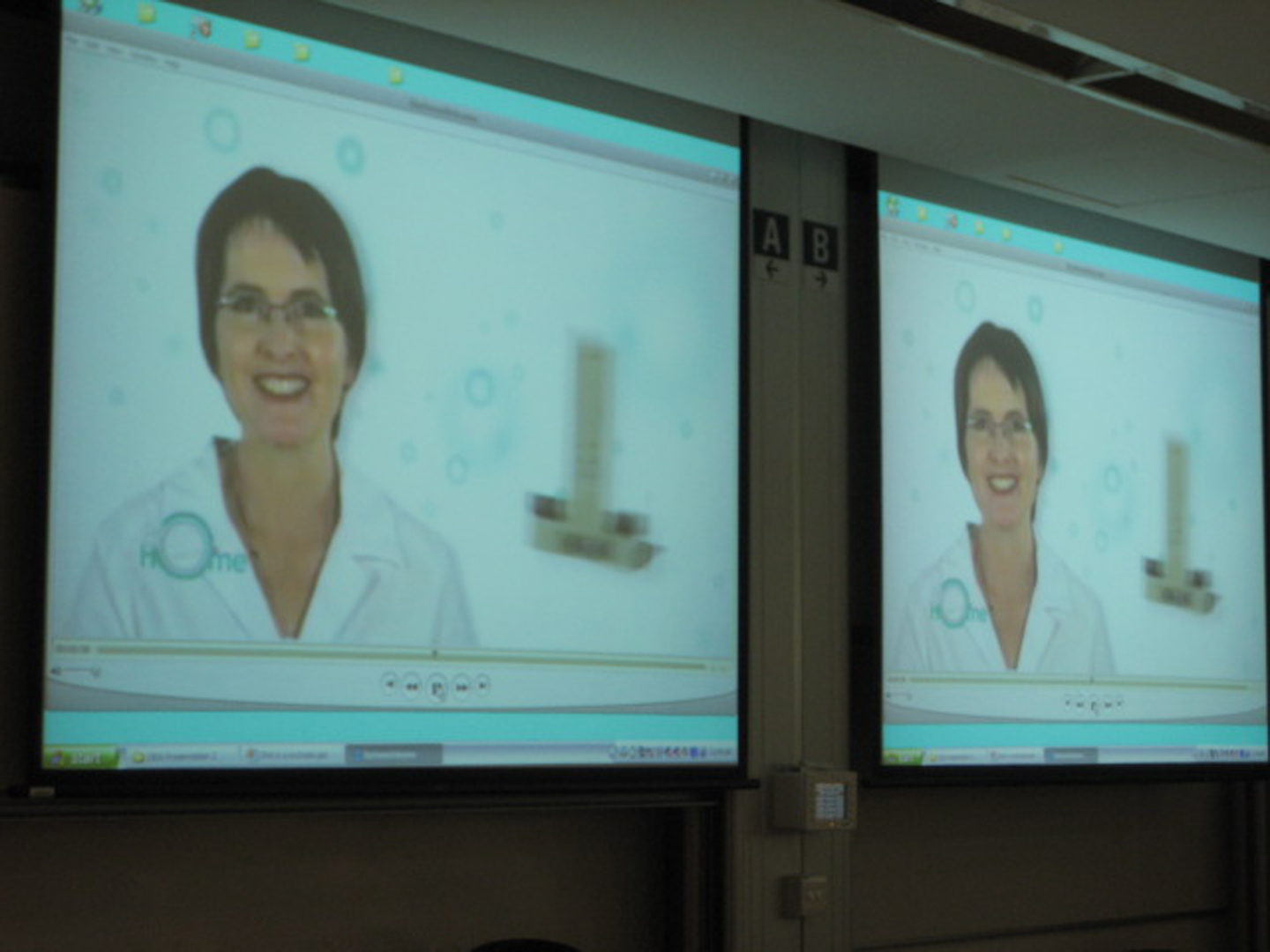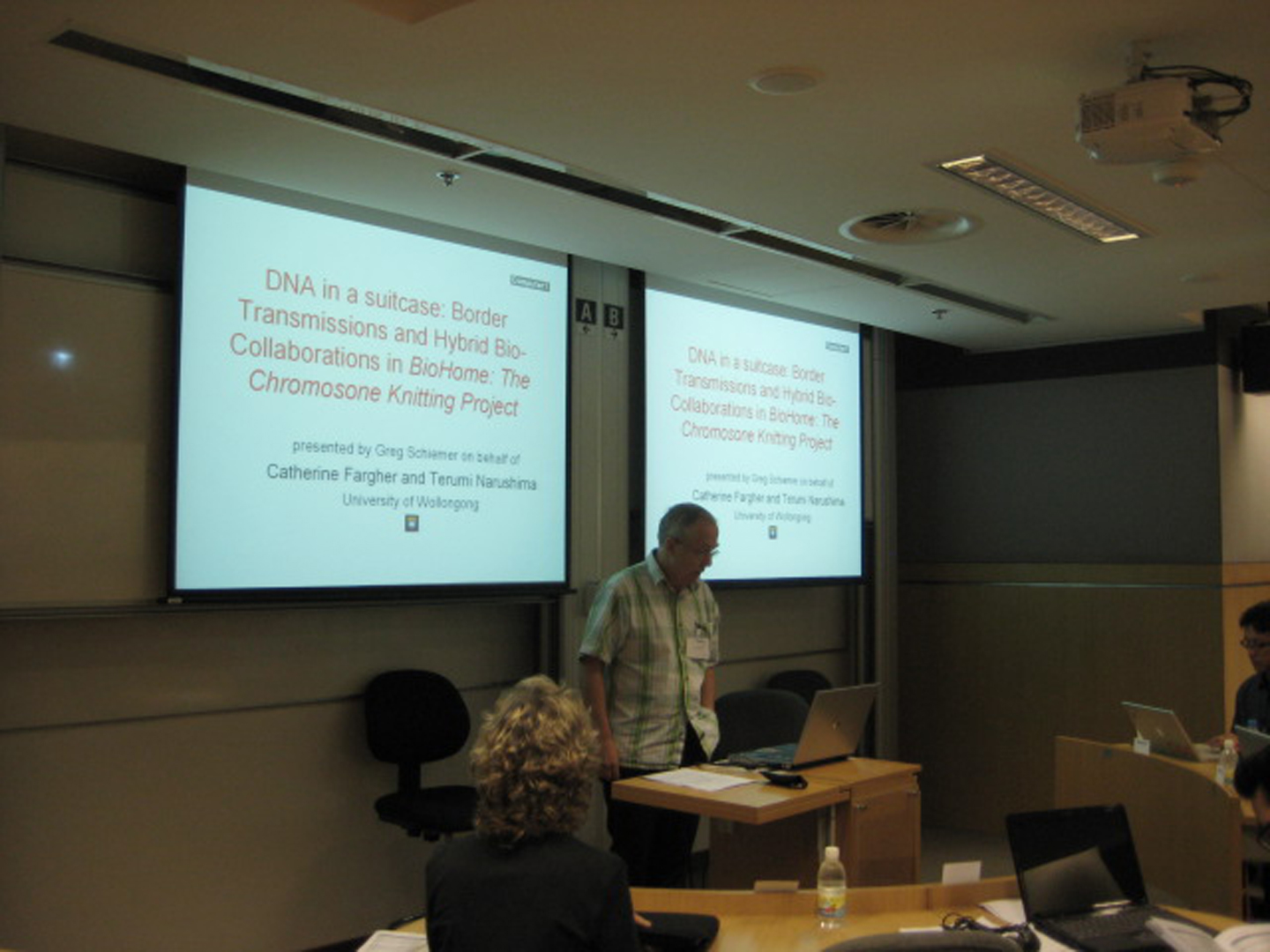“DNA in a suitcase: Border Transmissions and Hybrid Bio-Collaborations in BioHome: The Chromosome Knitting Project” presented by Fargher and Narushima
Symposium:
- ISEA2008: 14th International Symposium on Electronic Art
-
More presentations from ISEA2008:


Presentation Title:
- DNA in a suitcase: Border Transmissions and Hybrid Bio-Collaborations in BioHome: The Chromosome Knitting Project
Presenter(s):
Venue(s):
Abstract:
Taking the topic of Border Transmissions, the artists will present a range of documentary footage from their collaborative project BioHome: The Chromosome Knitting Project, a performance installation which blurs the boundaries between home and laboratory by placing live wet biology products in a biotech ‘display home’.
A discussion of the theories and methodologies behind the work will include:
• International and state border implications of biotechnology and its representation in art works; creating an international corporate branding style and sponsorship for BioHome. We will explore branding/intellectual property considerations, as well as getting sponsorship from international biotech companies and the ethics of biotech sponsorship. Sponsorship for DNA and cell products in BioHome has come from international biotech corporations Invitrogen, Sigma Aldrich South Pacific, as well as Eppendorf. There will also be a discussion on the Steve Kurtz (Critical Art Ensemble) case of biological wire fraud, as well as cases of ‘border crossings’ with bio-products for the sake of art – frog cells in jocks, or DNA in suitcases!• Crossing borders between forms: hybridising sound, wet biology and performance. BioHome is an installation-based performance featuring live wet biology products and practices and a soundscape created using DNA gel electrophoresis readings and knitting patterns. The work has been developed by writer/performer Catherine Fargher and composer Terumi Narushima, both postgraduate students in the Faculty of Creative Arts, University of Wollongong. The collaboration has come about as a result of the artists’ participation in a biotechnology workshop run by SymbioticA, The Art and Science Collaborative Research Laboratory based in the School of Anatomy and Human Biology, University of Western Australia. The wet biology collaborations have also involved hands-on support from the School of Biological Sciences, University of Wollongong. biohomeproject.net






